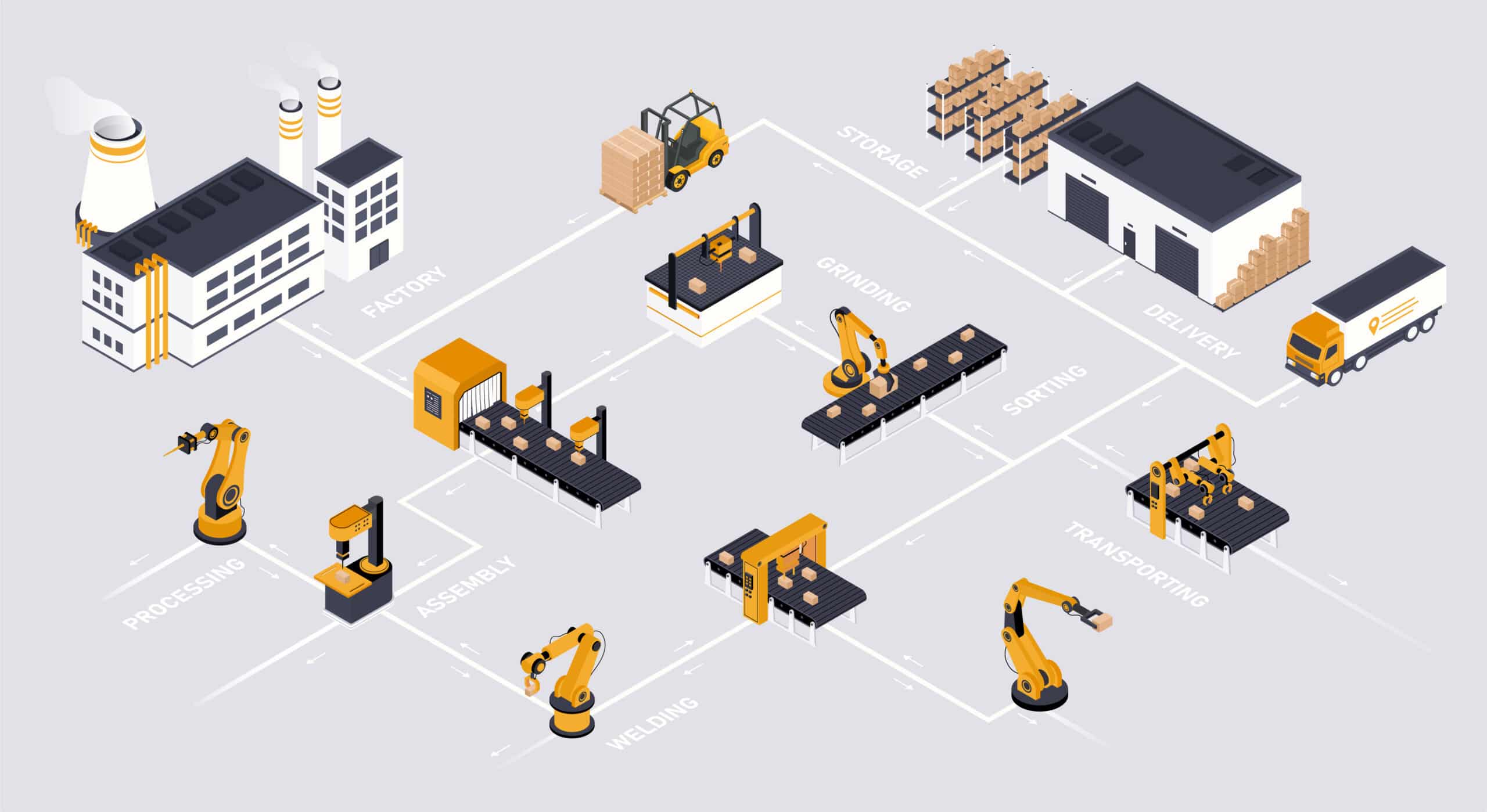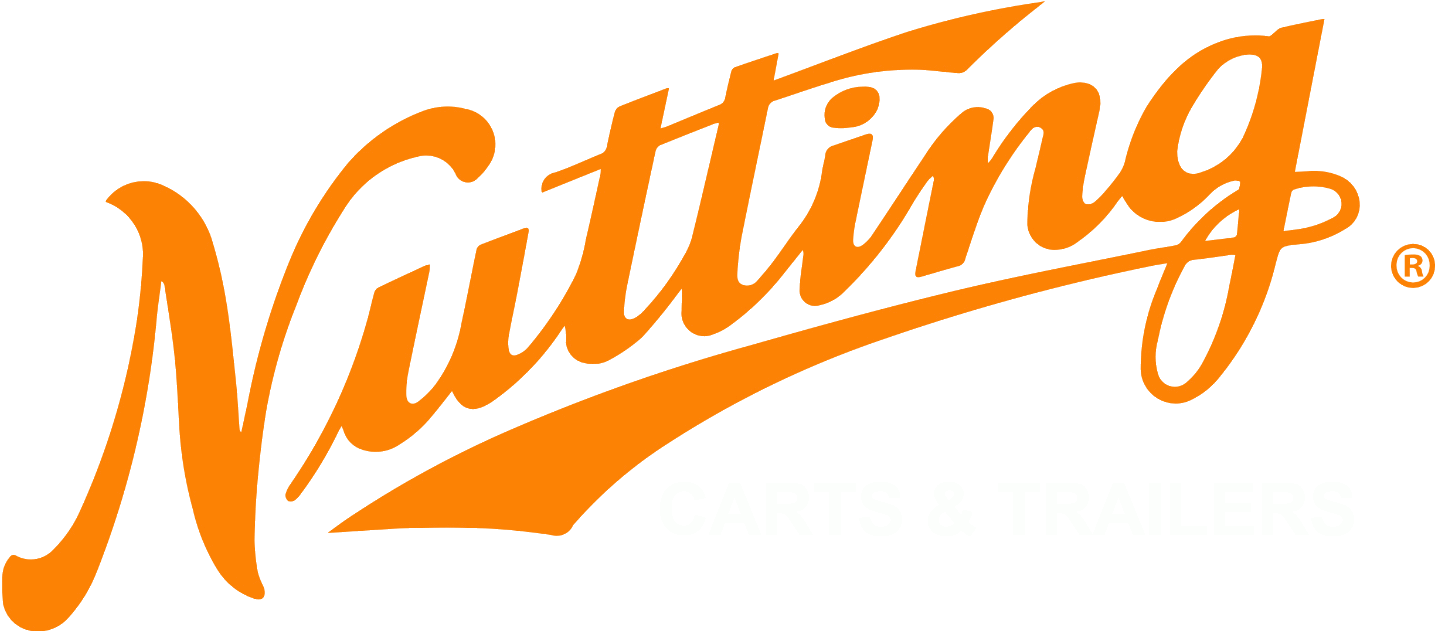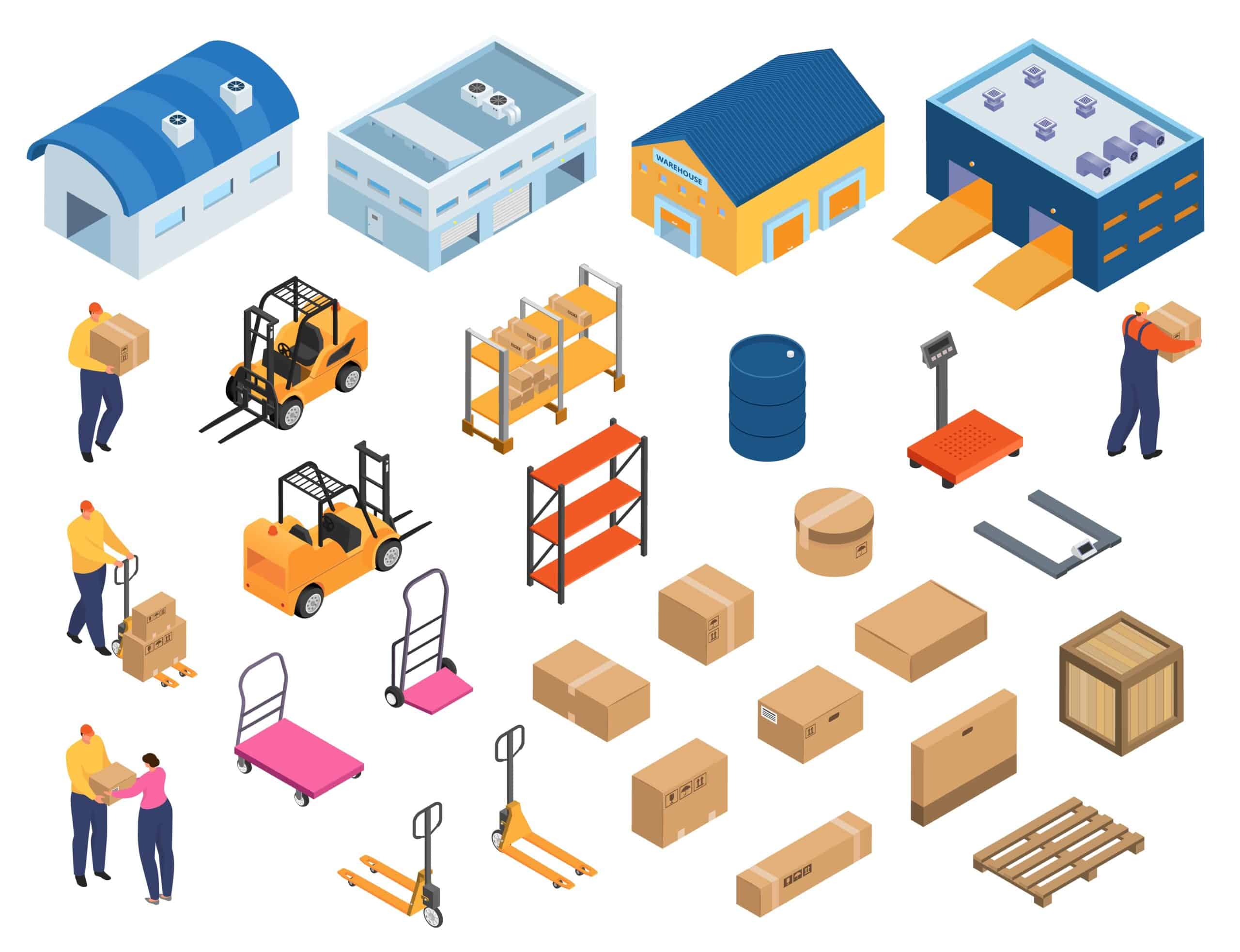How the Right Equipment Optimizes the Warehouse Process Flow
Discover the warehouse process flow and its various stages. Learn how the right equipment, like a mother-daughter cart system or order picker carts, can help optimize warehouse operations.
Supply chain management is an essential part of the e-Commerce business process. However, when looking at optimizing the supply chain’s warehousing and distribution center links, it quickly becomes apparent that warehouse design and maximizing warehouse space can only get you so far. Eventually, you need to look at making the most of the equipment at your disposal. Adding high-quality, well-engineered equipment can make all the difference for order fulfillment and warehousing businesses of all sizes. In this article, we’ll look at the different stages of the warehouse process flow and suggest a few additions that can immediately impact your picking process.
An Example Process Flow Chart
Here is a rough flow diagram of the different processes in place for warehouse operations. You can use this as a template when organizing your warehouse system.
Warehouse Management Process
The warehouse management process flow starts with a Warehouse Management System (WMS). The WMS is a computer system or, less commonly, an analog system, responsible for warehouse inventory management, inventory tracking, and inventory control. Most computer-based WMS’ rely on SKU and barcode readers to update a database in real-time and communicate with warehouse staff through sales order updates and notifications. A functioning WMS is crucial for fulfilling customer orders and customer satisfaction.
Inbound Process
The inbound or receiving process is where the products arrive at the warehouse or distribution center. The items are processed, confirming they have arrived in suitable condition and the correct amounts, and then added as inventory to the WMS.
As items are inspected in the inbound process, placing them directly onto bins on steer carts or mother-daughter carts can reduce the need to re-sort these items later. Mother-daughter carts are especially helpful because the bins can be removed from the mother cart and placed directly into storage during the put-away process. You can learn more about mother-daughter carts later in this article.
Put-Away Process
After items have been received, the put-away process begins. During this stage, goods are moved from the receiving area to a warehouse storage location. Some operations chose to add items to the inventory at this stage. Adding items to inventory at their storage location can help improve accuracy for a WMS that tracks item specific inventory location. Identifying strategice storage locations is also critical in this step. It can help creating inefficiencies with wasted movement during the picking process.
Picking Process
The picking process is when products are gathered to fulfill customer orders. As discussed in previous articles, there are many ways to streamline this pick-up. Still, ensuring your pickers have an effective system and the proper equipment for the job is crucial during this stage of the fulfillment process.
Creating custom order picking carts will allow your pickers to quickly and efficiently move items from their storage location to the packing location. If your warehouse often packages specific items together for orders, Nutting can help you customize a picking cart that will accommodate the right parts to reduce the need for multiple picking trips for one order.
Packing Process
The picked products are then prepared for shipping to the customer during the packing process and moved to a staging area.
If you often handle larger item orders, swivel top carts can allow packers to wrap a pallet without having to uncouple trailers or move around the carts, saving time and reducing injury risks.
Outbound Process
The outbound, or dispatching process, is where the products are ready to be shipped and must be stored until they can be loaded for transport. Organization is an integral part of this stage. Warehouses can lose efficiency if a later shipment is stored in such a way that it blocks an earlier shipment. If the same staging area is used for both loading and unloading, orders awaiting dispatch can get in the way of the receiving process and vice-versa. Late dispatches can delay loading and potentially cause late delivery.
Shipping Process
Lastly, the shipping process is the stage where the product leaves the fulfillment center and is on to the supply chain’s following link. Shipping is most successful when an order has been properly and efficiently processed through all of the preceding stages of the warehouse process flow. o

Increase Safety, Efficiency, and Workflow
The transportation of goods in a warehouse is a crucial process that can impact the efficiency of the entire operation.
If you’re looking for a way to improve warehouse efficiency and workflow, mother-daughter cart systems may be the answer. These systems consist of two parts – a Mother Cart and a Daughter Cart – that work together to create an efficient system for moving materials.
In this system, the Daughter Cart rides within the frame of the Mother Cart, making it easy for them to trail behind a tugger train and then be dropped off at various locations for loading and unloading. In addition, multiple Mother carts can be easily attached to tuggers or AGVs (automated guided vehicles).
In a traditional warehouse setup, workers constantly move back and forth between different areas to retrieve materials or transport goods. This leads to inefficient use of time and resources and increases the chances of accidents occurring. With mother-daughter cart systems, workers can stay in one area as the carts move around them. This not only saves time but also reduces the risk of accidents.
The mother-daughter cart system is a versatile and efficient way to move inventory in a warehouse setting. Implementing a mother-daughter system reduces travel time as the tugger train can continuously move multiple daughter carts throughout the warehouse with minimal downtime. In addition, the mother-daughter cart system improves the flow of goods by allowing employees to quickly and easily load and unload items onto the carts. As a result, this system is an effective way to reduce labor costs and increase efficiency.
At Nutting, we understand that cart systems play an important role in facilities across various industries. That’s why we offer a variety of custom options to ensure that our clients can find the perfect solution for their needs. Our products have been manufactured in the USA for over 125 years, so you can rest assured that you’re receiving a high-quality product that will stand up to years of use. Whether you need a cart with a specific number of shelves or one designed to hold a particular load, we have you covered. Contact us today to learn more about our cart systems and how we can help you streamline your operation.


